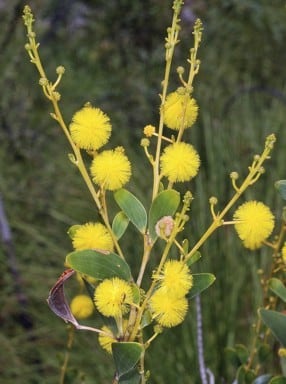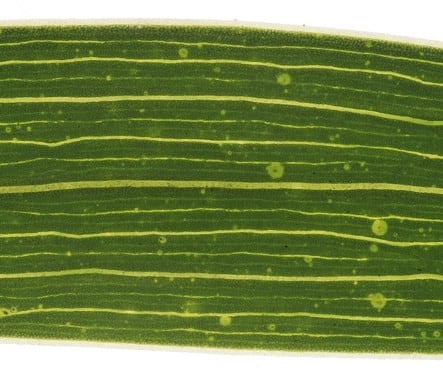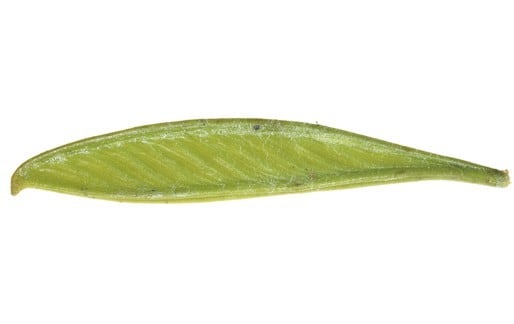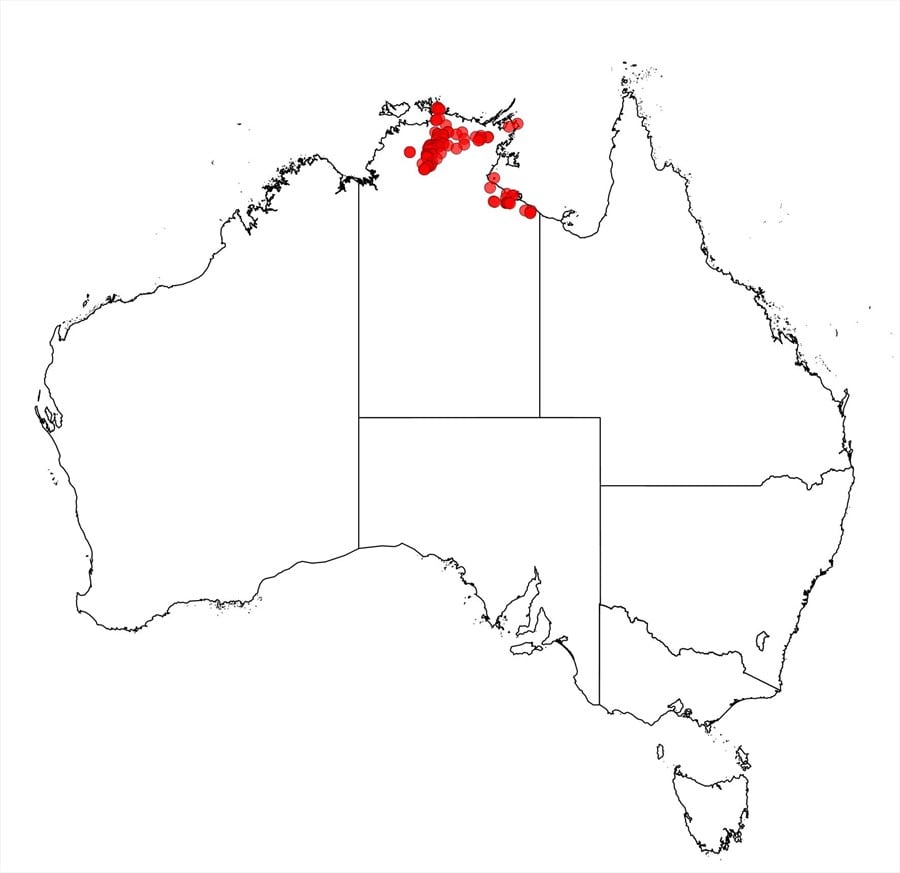Acacia producta Tindale
WATTLE
Acacias of Australia
Family
Fabaceae
Distribution
Occurs in the Top End of the N.T. and on Maria Is., Gulf of Carpentaria, N of 17ºS, between 132ºE and 136º20'E.
Description
Shrub to 2 m high, erect or prostrate, resinous. Bark smooth, dark grey. Branchlets angular towards apices, with resin-crenulated ridges. Phyllodes narrowly oblanceolate to elliptic, straight and often dimidiate or shallowly recurved, 3–6 (–9) cm long, (4–) 5–15 (–20) mm wide, (young phyllodes apically resinous), usually with 3 prominent longitudinal nerves (1 nerve often becoming confluent with ventral margin towards base), with 2–4 subprominent longitudinal nerves; minor nerves 2–4 per mm, sometimes anastomosing; gland 1, conspicuous, basal. Inflorescences simple, 1 or 2 (rarely 3) in axils of reduced phyllodes; peduncles (3–) 7–25 (–35) mm long; heads globular, 5–13 mm diam., 14–39-flowered, yellow or bright yellow. Flowers 5-merous; calyx 0.5–1.2 mm long, scarcely dissected, with few hairs on lobes; corolla 1.5–2.5 mm long, dissected to c. 1/3, glabrous, with prominent petal midrib; ovary pubescent. Pods erect, narrowly oblanceolate to ±linear, tapered basally, 3–7.5 cm long, (2–) 3–8 (–12) mm wide, ±brown, obliquely nerved; margins prominent. Seeds oblique, oblong-elliptic, 3–7 mm long, dark brown; funicle-aril turbinate.
Phenology
Flowers in all months.
Habitat
Usually found on alluvial flats or rocky sandstone plateaux with extensive rock pavements, on laterite, in sand, sandy loams, kaolinitic soils or sandy silts, in heaths or eucalypt woodlands.
Specimens
N.T.: 5 miles [8 km] NE [of] Goyder R. Crossing, N.Byrnes 2643 (DNA, NSW); Jim Jim Ck, Kakadu Natl Park, C.R.Dunlop 5549 (CANB, DNA, NSW); 13 km SSW of Twin Falls, Kakadu Natl Park, M.Lazarides 8974 (CANB, DNA, NSW); levee of Katherine R., Stuart Hwy, M.D.Tindale 6041 & C.Dunlop (A, AD, BRI, CANB, DNA, MEL, PERTH, US).
Notes
This is a polymorphic member of the ‘A. stigmatophylla group’ with globular inflorescences. There is considerable variation in the populations of A. producta. Both erect and prostrate forms exist, but there is some inconsistency within these groups in the shape and spacing of the phyllodes, the nervation of the phyllodes and the number of flowers per capitulum.
FOA Reference
Data derived from Flora of Australia Volumes 11A (2001), 11B (2001) and 12 (1998), products of ABRS, ©Commonwealth of Australia
Author
Dr M.D.Tindale and Dr P.G.Kodela with the assistance of M.Bedward, S.J.Davies, C.Herscovitch, D.A.Keith and/or D.A.Morrison
Minor edits by B.R.Maslin & J.Rogers
This identification key and fact sheets are available as a mobile application:
URL: https://apps.lucidcentral.org/wattle/
© Copyright 2018. All rights reserved.












